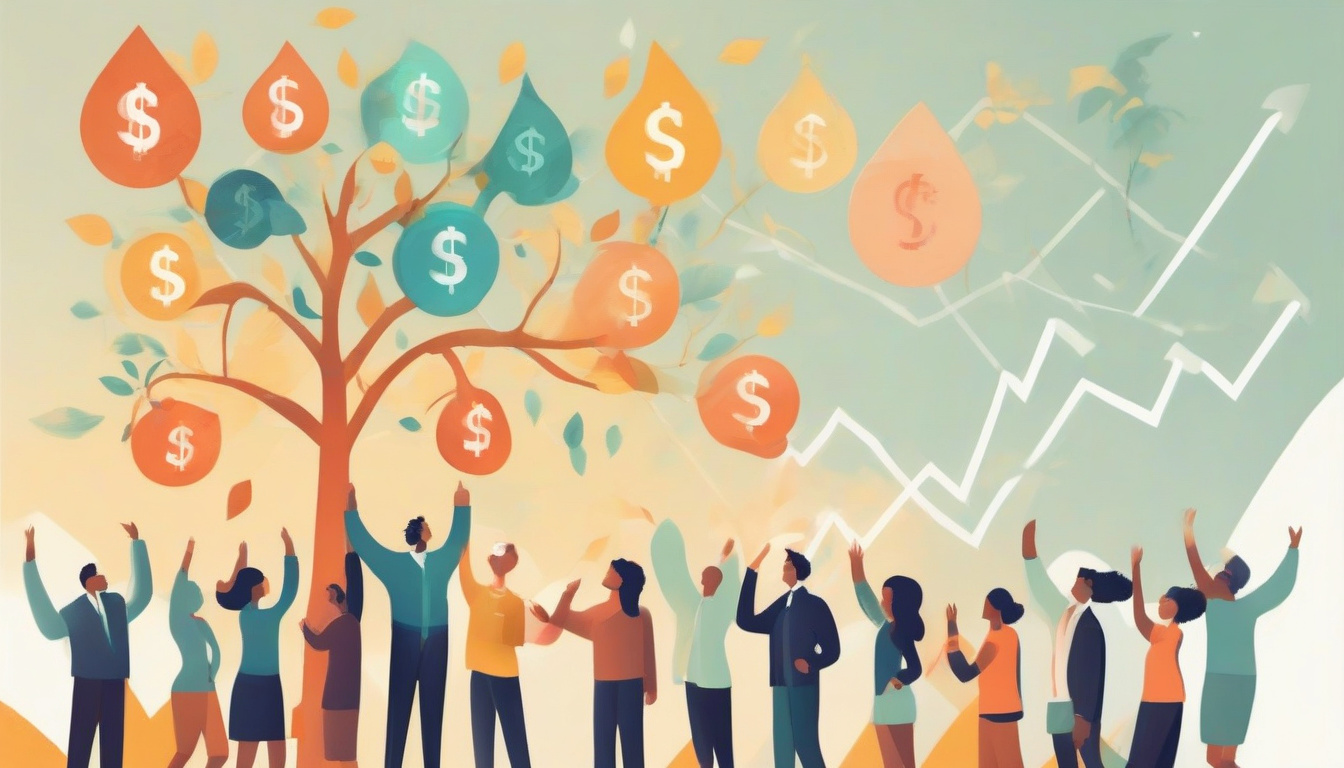Are you tired of living paycheck to paycheck, weighed down by the burden of debt? Unlocking financial freedom is not just a dream; it’s an achievable reality. In this article, we will delve into the best ways to pay off debt effectively, helping you choose strategies that align with your financial situation and goals. From understanding the different types of debt to outlining effective repayment methods like the snowball and avalanche strategies, we’ll provide you with practical advice. We’ll also explore budgeting tools that can assist you in managing your expenses, and share tips to keep you motivated throughout your debt repayment journey. If you’re ready to take control of your finances and embark on the path to financial independence, read on to discover comprehensive insights and strategies tailored just for you.

Key Takeaways
- Understanding different types of debt is crucial for effective management.
- Assessing your financial situation helps tailor strategies for debt payoff.
- The Snowball method and the Avalanche method are two popular approaches to debt repayment.
- Budgeting tools can enhance your ability to track expenditures and manage payments more effectively.
- Staying motivated through goal setting and support systems is vital for achieving long-term financial freedom.
Understanding Debt: Types and Impacts
Debt is a common financial burden that many individuals face at various points in their lives. Understanding the different types of debt and their impacts can provide clarity and help in formulating a plan to overcome it. Broadly, debt can be categorized into two main types: secured and unsecured. Secured debt is backed by collateral, meaning if you fail to repay, the lender can seize the asset (for example, a mortgage or car loan). On the other hand, unsecured debt is not tied to any specific asset, which often includes credit cards and student loans. Each type comes with its own challenges; secured debts, while often having lower interest rates, can put your assets at risk, whereas unsecured debts can accumulate high-interest fees if not managed properly.
In terms of impacts, high levels of debt can lead to stress, hinder financial stability, and affect one’s credit score. Furthermore, as people seek the best ways to pay off debt, it is essential to evaluate their personal financial situation. This means understanding not only the total amount owed but also how much interest is accumulating and which debts carry the highest rates. By adopting strategic repayment methods—such as the debt snowball (paying off the smallest debts first) or debt avalanche (focusing on debts with the highest interest rates)—individuals can make informed decisions that will alleviate their debt burdens more effectively.
Assessing Your Financial Situation
Assessing your financial situation is a fundamental first step in determining the best ways to pay off debt. Begin by compiling a comprehensive list of all your debts, including credit cards, loans, and any outstanding bills, detailing their interest rates and minimum payments. This will give you a clear picture of your total debt load. Next, evaluate your monthly income and expenses to understand your financial inflow and outflow. Calculate how much money you can allocate each month towards paying down debt after covering essential living expenses. It’s essential to identify any discretionary spending that can be cut back to free up resources for debt repayment.
You can also consider the snowball or avalanche method for debt payment strategies. The snowball method involves paying off the smallest debts first to gain momentum, while the avalanche method prioritizes debts with the highest interest rates, minimizing the overall payoff amount. Both strategies require discipline and commitment, but understanding your financial standing will make it easier to choose the right method that aligns with your goals.
Additionally, monitor your credit score, as this will influence your future borrowing opportunities. Aim for an emergency fund, even a small one, as this will prevent taking on additional debt in case of unexpected expenses. By taking a comprehensive, structured approach to assess your financial situation, you’re setting a solid foundation to determine the best ways to pay off debt effectively and responsibly.
‘The best way to predict the future is to create it.’ – Peter Drucker

Top Strategies for Paying Off Debt: Snowball vs. Avalanche
When it comes to tackling the burden of debt, choosing the right strategy can significantly impact your financial journey. Two of the most popular methods for paying off debt are the Snowball Method and the Avalanche Method. Both aim to fulfill the goal of becoming debt-free, but they do so in fundamentally different ways.
The Snowball Method is advantageous for those who thrive on motivation and psychological boosts. This approach involves paying off your smallest debts first. By focusing on the smaller balances, you quickly gain momentum as debts disappear, leading to a sense of accomplishment that can encourage you to continue.
In contrast, the Avalanche Method prioritizes debts based on the interest rates attached to them. This means that you tackle the highest-interest debts first, regardless of their balances. Over time, this strategy can save you significant amounts of money in interest payments, making it potentially more cost-effective.
Deciding which is the best way to pay off debt largely depends on your personal financial behavior and psychological preferences. If immediate results resonate more effectively with you, the Snowball Method might be your best bet. However, if long-term savings and interest reduction are your primary concerns, the Avalanche Method stands out as the superior choice. Either way, understanding these strategies allows you to take informed steps towards financial freedom.
Utilizing Budgeting Tools and Resources
When tackling debt, utilizing budgeting tools and resources can significantly enhance your financial strategy and progress. The best ways to pay off debt often begin with a comprehensive understanding of your current financial situation. Tools like budgeting apps (e.g., Mint, YNAB) help you track your income, expenses, and debt payments in real-time, providing clarity on where your money is going. Additionally, online calculators can simulate various debt repayment strategies, such as the avalanche or snowball methods, enabling you to see how quickly you can eliminate debt based on varying payment amounts and interest rates.
Moreover, consider enrolling in online financial literacy courses or workshops that many local nonprofits offer, which will equip you with the skills needed to manage your finances effectively. These resources not only provide fundamental knowledge but often include templates and guides to create your own budget and prioritize debt payments. By leveraging these budgeting tools and resources, you can develop a structured plan that outlines the best ways to pay off debt, ultimately leading to greater financial stability and peace of mind in your journey to becoming debt-free.

Staying Motivated: Tips for Long-Term Financial Freedom
Staying motivated is a crucial aspect of the journey toward long-term financial freedom, especially when focusing on the best ways to pay off debt. Here are several tips to help you stay motivated on your path to a debt-free life:
###
1. Set Clear and Achievable Goals
Define what financial freedom means for you and set specific, measurable, and achievable goals. Breaking down your debt repayment into smaller, manageable milestones can make the process feel less overwhelming. Celebrate each milestone to keep your spirits high.
###
2. Create a Visual Representation of Your Progress
Visual aids can be powerful motivators. Consider using a chart or graph to track your debt repayment progress. Seeing how much you have paid off can reinforce positive behavior and keep you focused on your goals.
###
3. Maintain a Positive Mindset
Adopt a growth mindset, emphasizing that your current financial situation can improve with consistent effort. Surround yourself with positive influences, whether it’s books, podcasts, or peers who support your financial journey. This can help mitigate feelings of anxiety or despair about your debt.
###
4. Reward Yourself Wisely
Create a reward system for when you reach your debt repayment goals. This doesn’t necessarily have to involve spending money; it could be something as simple as taking a day off to relax or enjoying a night out with friends. Just make sure these rewards don’t counteract your efforts to pay off debt!
###
5. Educate Yourself on Financial Literacy
Knowledge is power. Investing time in understanding various financial concepts, such as the best ways to pay off debt, can empower you to make informed decisions. Utilize resources like financial blogs, workshops, and books that delve into effective debt repayment strategies.
###
6. Engage with Support Groups
Joining a support group, whether online or in person, can provide you with a community of like-minded individuals who share similar financial goals. Sharing experiences, challenges, and tips can greatly encourage your motivation to stay on track with debt repayment.
###
7. Keep Your Eyes on the Future
Always remind yourself of the long-term benefits of being debt-free—more financial security, better credit opportunities, and greater peace of mind. Visualization techniques can be effective here; imagine your life without debt and what it can mean for you and your loved ones.
By implementing these tips and focusing on the best ways to pay off debt, you equip yourself with the tools necessary to remain motivated throughout your financial journey.
Frequently Asked Questions
What are the main types of debt I should be aware of?
The main types of debt include secured debt (like mortgages and car loans), unsecured debt (such as credit card debt and personal loans), and student loans. Each has different implications for repayment and interest rates.
How do I assess my financial situation before tackling my debt?
To assess your financial situation, list all your debts, including amounts, interest rates, and minimum monthly payments. Then, analyze your income, expenses, and savings to create a clear picture of your financial health.
What is the difference between the Snowball and Avalanche methods of debt repayment?
The Snowball method focuses on paying off the smallest debts first to build momentum, while the Avalanche method prioritizes debts with the highest interest rates to minimize overall costs. Both methods have their benefits depending on your personal financial psychology.
What budgeting tools can help me stay on track with debt repayment?
There are several budgeting tools available, including apps like Mint, YNAB (You Need A Budget), and spreadsheets. These tools can help you track expenses, set budgets, and visualize your progress towards paying off debt.
How can I stay motivated during my debt repayment journey?
To stay motivated, set specific, achievable goals, celebrate small wins, connect with support groups or friends for accountability, and regularly revisit your financial goals to remind yourself of the rewards of financial freedom.
